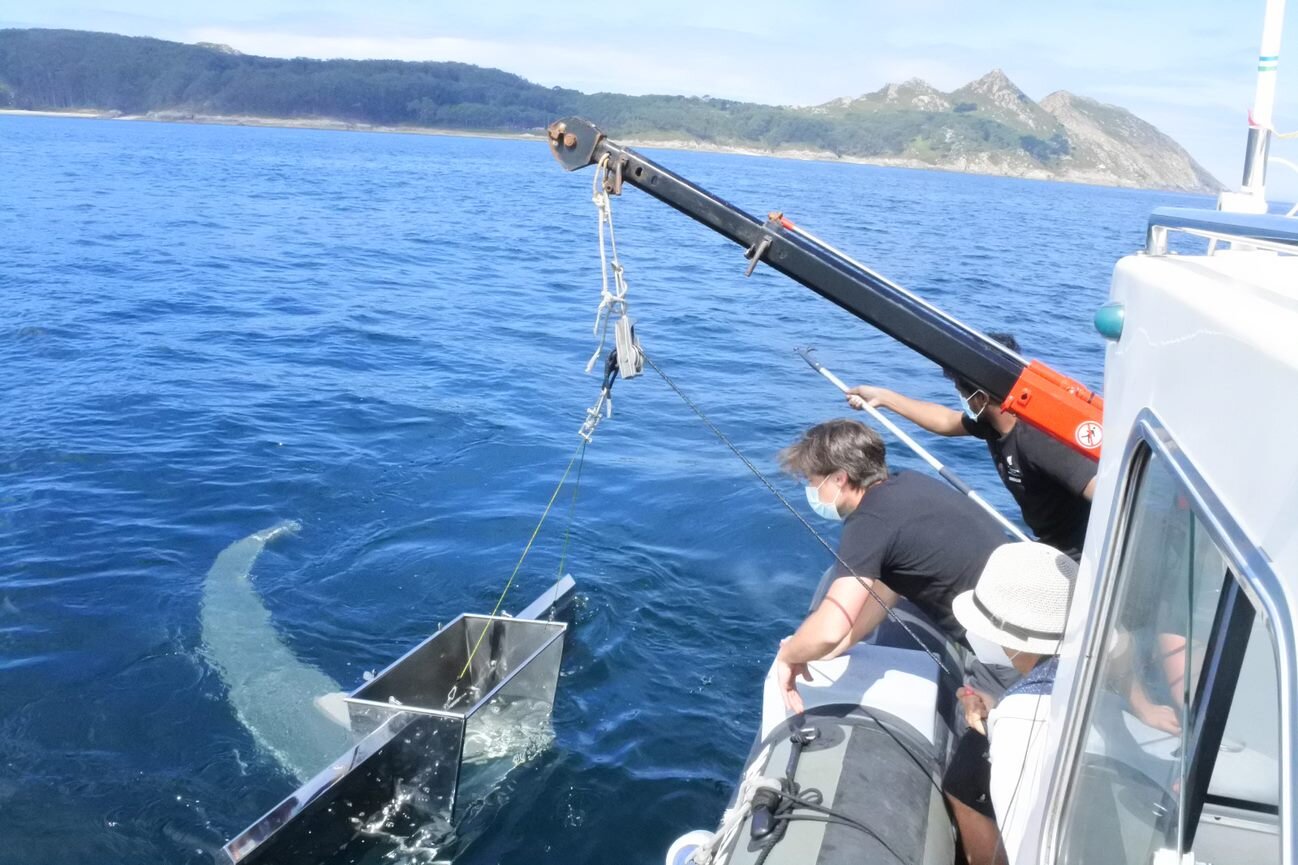A Joint Activity Between JPI OCEANS “RESPONSE” and “FACTS” Consortia
Anna Rotander pictured on field sampling activities in Sweden, with UFO device.
We are happy to announce that the joint activity between JPI OCEANS RESPONSE and FACTS consortia which involved the sampling of microplastics > 10 µm and their associated pollutants in European coastal waters using harmonized sampling and analytical techniques was successfully undertaken last month.
A key factor in obtaining comparable data in microplastic pollution research is the harmonization of sampling and analytical techniques. JPI OCEANS RESPONSE partners (Örebro University, University of Antwerp, University of Bordeaux, Tallinn University, University of Vigo and Danish Technical University-DTU) in collaboration with the lead partner of JPI-OCEANS FACTS consortia (Aalborg University, AAU) are conducting a joint action to sample microplastics (MPs) and their associated pollutants using a new plastic-free pump-filter system (“UFO” developed by AAU) and common analytical protocols.
Researchers (L-R): Gunaalan Kuddithamby, Dr. Alvise Vianello Leticia Vidal (Image Credit: Rodrigo Almeda).
The goal of this collaboration between JPI Oceans consortia is to estimate the abundance and composition of MPs > 10 um and their associated pollutants (plastic additives and absorbed organic pollutants) in coastal waters using common methodologies for comparable and reliable results. This collaboration has been proposed and coordinated by Dr. Rodrigo Almeda (JPI-OCEANS RESPONSE) and Dr. Alvise Viatello (JPI-OCEANS FACTS). More than 60 samples from coastal waters in five different EU countries have been successfully collected and the analysis of both MPs and associated pollutants will be conducted in the following months. MPs will be analyzed by Micro-FTIR using a common protocol for sample preparation.
UFO Sampling Device (Image Credit: Natalja Buhhalko)
Pollutants associated with microplastics, including organophosphate flame-retardants, bisphenols, polybrominated diphenyl ethers, metals, PAHs and PCBs will be analyzed in the University of Las Palmas de of Gran Canaria (ULPGC). “Knowing only the type of plastic polymer and its concentration in surface waters is not enough to evaluate the impact of marine MPs in the ecosystems; we need a better estimate that includes the type and concentration of plastic additives and associated pollutants in coastal waters, since these play a driving role in the toxicity of plastic pollution on biota”, says Dr. Almeda.
Manta Net In Situ (Image Credit: Rodrigo Almeda)
As an example of this collaboration, Dr. Vianello (AAU) and PhD candidate Gunaalan Kuddithamby (DTU) joined a sampling campaign in Vigo coordinated by Dr. Leticia Vidal-Liñán (University of Vigo) in July 2021. Samples were collected at three different locations identified as being potentially affected by microplastic pollution at different levels. The first location (polluted site) was chosen because of its vicinity to the outlet of a submarine pipe transporting wastewater from the Wastewater Treatment Plant of Vigo. The second location represented an intermediate situation, still affected by potential urban sources of microplastics, but distant from potential wastewater upwelling. Finally, the third location was selected in proximity to the Cies Islands (a protected Spanish National Park) as a control site.
The ongoing joint activities between JPI-OCEANS consortia stresses positive inter-project collaborations between these two groups, building the baseline for harmonized analytical approaches and, therefore, comparable and reliable results. This will ultimately lead to a better understanding of microplastic pollution in European waters.




